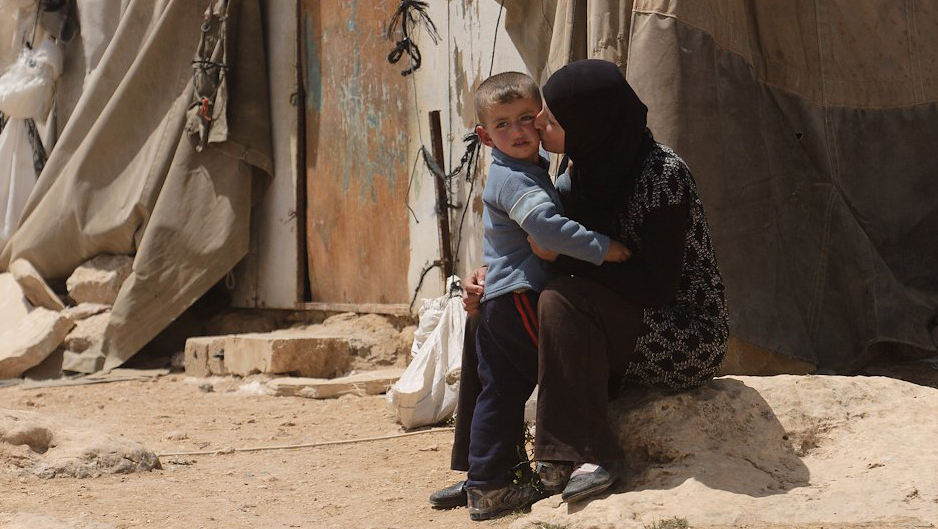Something is burning in the Middle East, and the smoke can be seen across the world.
As the war between Israel and Hamas heats up, Middle Eastern powers are beginning to take notice.
The war between Israel and Hamas is escalating rapidly as the Israeli Defense Force (IDF) began its ground invasion of the Gaza Strip Thursday morning. After its destruction, regional powers have begun backing different factions throughout the area. As the conflict and humanitarian crisis rages on, now accompanied by the plight of regional proxies, an ending appears nowhere in sight.
October 7th – The Beginning
Palestine is split into two distinct parts: the West Bank and the Gaza Strip. The West Bank, home to Jerusalem, is controlled by an Israeli occupation and the National Authority of Palestine. Gaza, however, is under the control of Hamas; an Islamic resistance and militia group devoted to the liberation of Palestinian people from Israeli oppression. Hamas has taken terroristic actions against Israel in pursuit of this goal, with the mortar rocket and ground incursion of Oct. 7th decimating the border wall and countless Israeli citizens. The combined assaults led to the death of an estimated 1400 Israelis, many of them civilians. Oct. 7th marked the date of the deadliest attack in Israel’s history, igniting the fuse of a multi-factional war that is only just beginning to spread.
Israel retaliated, declaring war on Hamas by amassing an army of 360,000 IDF soldiers and beginning gruesome bombing raids on the city of Gaza. Israel’s declaration is not an attempt to lash back at Hamas, but a vow to eradicate the group forever (Benjamin Netanyahu, PM of Israel). Israel declared Friday, Oct. 13th that the north of the Gaza Strip is an ‘evacuation zone’ and that all Palestinians living north of Wadi-Gaza, a river splitting Gaza in half, must leave. However, Palestinians cannot leave Gaza, they are entrapped on all sides by natural and regional barriers that make escape impossible. Israel of course encroaches on the northern & eastern borders. To the west lies the Mediterranean Sea, dominated by an Israeli blockade 50km offshore. The southern border, where Israel demands Palestinians flee, is with Egypt.
In the very land that Israel has ordered refugees to flee to sits Egypt, which is ready to actively prevent any Palestinians from deserting to Egypt. Egyptian Prime Minister Mostafa Madbouly stated that Cairo is committed to protecting its land and sovereignty at any cost in a press meeting held at Gaza’s southern border.
“We, The Egyptians, are ready to sacrifice millions of lives so that nobody approaches a grain of sand [in North Sinai],” Madbouly said.
In the wake of the chaos of the conflict, the US, Israel’s most crucial ally, swoopes in. President Joe Biden traveled to Israel urging Israel not to engage in a regional war, much like the US did after the September 11th attacks; plunging into a condemned war that would result in gratuitous bloodshed. A war that is fought in the streets, where innocent civilians appear the same as militants. A war that, if fought would destabilize the balance of powers within the Middle East.
Regional Impact of a Full-Scale War
The geopolitics of the Middle East stands incredibly diverse with decades of unrest and conflict cemented in its past, but the keystone between The fate of the Gaza Strip and the rest of the region rests with one country: Iran. Iran has continuously fought in hopes of becoming the most influential country in this region. This plight puts the Iranian Government in competition with Israel, an actual regional power that is backed by the US, allowing the US to assert its authority via Israel over the rest of the region.
Instead of directly attacking Israel which would no doubt spark an international outcry, Iran refuses Israel’s regime by backing numerous anti-Israeli factions scattered throughout the arab world. Iran does so in their ‘Axis of Resistance”. Hamas is one of these groups that receives funding, weaponry, and supplies from Iran. The thousands of rockets that were detonated in Israel on Oct. 7th were stocked by Iran as a way to disrupt and destabilize the dominance of Israel as a world leader. As Israel takes its counteroffensive against Hamas to new heights, Iran and the Axis of Resistance are beginning to respond with miniaturized incursions throughout the region targeting Israeli & American footholds.
A large majority of these incursions break out along the Israel-Lebanon border. This territory is home to Iran’s most powerful proxy Hezbollah. This Islamic militant group has tens of thousands of soldiers waiting in the wings, ready to lead an assault at any moment. Additionally, Hezbollah has immediate access to over one hundred thousand missiles capable of striking against nearly all of Israel. Hezbollah is projected to be an even larger threat than Hamas. Hezbollah has reportedly been leading numerous attacks on IDF forces throughout Israel’s Lebanese border. In a counter, Israel has launched two bombing raids on Syrian airports where Iran was supplying Hezbollah. Moreso, Israel has begun evacuating citizens from the front lines and shifting the offensive away from Gaza.
Amid all of this, the international community believes that it is in Israel’s best interest not to invade the Gaza Strip. It is perceived that if Israel is to launch a ground assault against Hamas, it could be a turning point for Hezbollah (Iran) and the Axis of Resistance to officially lash back against Israel. The invasion of Gaza would mark this war becoming a multi-front onslaught bringing conflict to the front doors of Iran, Lebanon, and Syria.
This outcome looks to become more of a reality as the US fielded two fleets of naval strike groups on both the Israeli and Iranian Coast. A combined 15,000 sailors account for the two strike groups, over half of the total number of US troops stationed in the Middle East. This show of strength is designed to escalate the rising tensions of both Iran and its proxies by deterring them from engaging in violence against The US and its allies. President Biden released a statement on the issue:
“To any country, any organization, anyone thinking of taking advantage of the situation; I have one word. Don’t,” President Biden said.
On Monday, Nov. 13 Israel led a wildly restricted ground invasion of the Gaza Strip. At the time of writing, Hezbollah and the various Middle Eastern factions have not yet escalated the conflict. This shows that although Iran is primed for conflict, the Iranian regime is hesitant to operate Hezbollah inside of Israel, at least with the presence of the US. In conjunction, this illustrates that the destabilized Lebanese Government has no appetite to engage in war with Israel, or by extension, the US.
Next Steps
The barrage of attacks on Gaza continues. More and more, Palestinians face a growing humanitarian crisis worsened by Israel’s occupation of the strip. Egypt has reportedly begun opening its border with Gaza to allow foreign nationals and severely wounded civilians to seek refugee, however, the rest of the Palestinian population remains denied from leaving the wargrounds of Gaza.
Iran and the Axis of Resistance continue bombarding small-scale targets throughout but seem to reel away from direct conflict as US military presence in the region grows. With neither faction showing signs of slowing, Palestinians can only wonder what comes next for their country, their family, and their lives.







